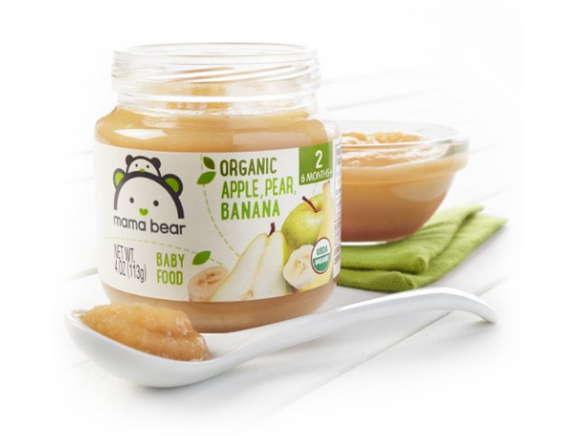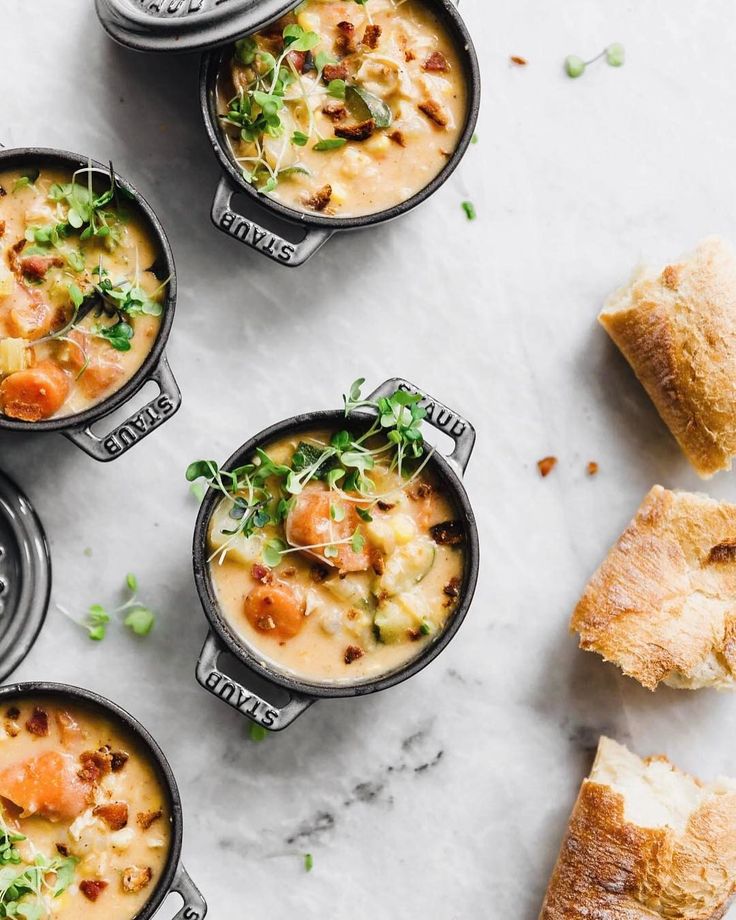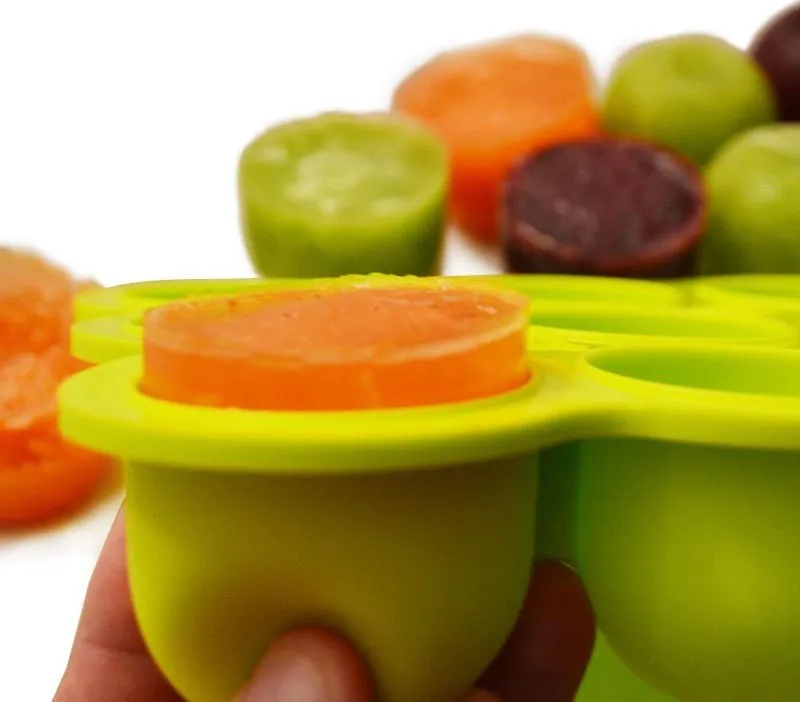When can i start feeding my baby finger foods
Best Finger Foods for Babies: The Ultimate Guide
How exciting that your baby is about to graduate from mushy foods to finger foods! This is a big step in your little one’s development. However, you may be wondering when’s the right time to start finger foods, and how to tell that your baby is ready. We’ll answer all these questions and more, plus give you a list of the best finger foods to introduce to your baby first.
Introducing Finger Foods to Your Baby
So, when can babies eat finger foods? You can start to give your baby finger foods around the time they’re able to sit up independently and can bring their hands to their mouth. This may happen between the ages of 8 months old and 9 months old, but your baby may be ready a little sooner or later than this time.
Around this time, you may also notice that your baby is developing their pincer grasp and may be making chewing motions. These are both great indications that your baby’s ready for finger foods. Moreover, using their fingers to pick up foods will further develop your baby’s fine motor skills.
Some parents who adopt the baby-led weaning approach may start offering finger foods to their infants as early as 6 months old. This method skips spoon-feeding with solid foods and instead lets your baby take the lead in self-feeding with finger foods. Some believe this approach can decrease fussiness when it comes to introducing new foods, including finger foods, to your baby. Speak to your child’s healthcare provider if this method is something you’d like to try.
Giving your baby finger foods can help your little one learn to feed themself, just one step toward gaining independence. Self-feeding can be great fun for your baby. Even if much of the food doesn’t end up in your baby’s mouth, the fact that they’re exploring this new frontier is an accomplishment to be proud of.
First Finger Foods for Your Baby
As you begin choosing finger foods for your baby, check out the following ideas:
Steamed veggies like sweet potatoes, potatoes, carrots, green beans, peas
Soft, ripe fruits like bananas, berries, peaches (peeled), mangoes (peeled)
Whole-grain breakfast cereals (without nuts, clusters, or chunks)
Whole-grain pasta (cooked well)
Whole-wheat bread
Whole-grain crackers or wafers like teething biscuits
Soft meats like chicken
Cheese (mild)
Scrambled eggs.

Be sure that any of the above finger foods are cut into small pieces. You don’t want your baby eating a piece that’s too big to swallow. And, make sure to watch them while eating.
Finger Food Safety
During this time babies are more likely to swallow foods without chewing them, whether they have a few baby teeth coming in or they have no teeth. Avoid giving any finger foods that require a grinding action to chew (this type of chewing is typically mastered around the age of 4), as these may pose a choking risk. Offer finger foods that are soft, easy to swallow, and broken or cut into pieces that your baby cannot choke on. A good rule of thumb is that soft and mushy finger foods are safe for your baby. Small, round, coin-shaped, hard, chewy, crunchy, slippery, or sticky foods may lead to choking. Here are some foods to avoid offering your baby when they start on finger foods:
Peanut butter (in chunks)
Meat (in chunks)
Cheese (in chunks)
Raw veggies (in large chunks or round shapes), including celery sticks, carrot sticks, baby carrots, cherry tomatoes, and peas
Raw hard fruit (in large chunks or round shapes), including apples, pears, and grapes
Nuts (whole)
Seeds
Popcorn
Chewing gum
Candies (hard, gooey, or sticky)
Hot dogs or meat sticks.

There are ways you can still give some of the above foods while making them easier to eat and less hazardous to swallow. For example:
Grapes or cherry tomatoes, cut in half
Creamy peanut butter spread thinly on whole-grain bread that’s cut into small squares
Hot dog, cut lengthwise and then cut into small 1/2-inch pieces.
Note on Food Allergies
Medical experts once recommended that parents avoid feeding their babies eggs, fish, and peanut butter since babies may be allergic to these foods. However, it’s now recommended that you introduce these foods early—while keeping a close watch for any reactions—since this approach can help reduce your child’s chances of developing food allergies. Before introducing peanut butter or peanut products, consult with your baby’s healthcare provider. Your baby is more likely to be allergic to these foods if
food allergies run in your family
your baby is known to have an egg allergy
your baby has eczema.

The Bottom Line
It’s time to introduce finger foods to your baby when you see that they’re able to sit up on their own, start bringing their hands to their mouth, and can use a pincer grasp to hold onto small items, like finger foods. This development happens around the age of 8 or 9 months old, but you may see it sooner or later in your baby.
In the beginning, you’ll want to introduce finger foods that are soft and easy to swallow, since babies at this age tend to swallow instead of chew even if they have a few baby teeth. Think steamed veggies and soft fresh fruits. You can also introduce whole-grain bread, crackers, cereal, or pasta if they’re cut into small pieces. Chicken, mild cheese, and scrambled eggs are also great options when served in small pieces.
Avoid hard foods like raw veggies and fruits, as well as chunks of nut butter, cheese, and meat. Whole nuts and seeds are not recommended, nor are chewing gum, candies, hot dogs, or meat sticks. All these items can pose a choking hazard.
All these items can pose a choking hazard.
Transitioning to finger foods is a big step in your baby’s development and independence. Letting your baby self-feed with finger foods may be a bit messy at first, but you’ll both get the hang of it. Learn more about developmental milestones for your 9-month-old baby.
Giving Baby Finger Foods at 7-8 Months
Written by Rebecca Felsenthal Stewart
In this Article
- Month 7, Week 3
- Month 7 Week 3 Tips
Month 7, Week 3
Once your baby is a pro at eating soft mashed foods, they may be ready to move on to finger foods around 8 months. They have the dexterity to pick the food up and release it or mash it, and will become more efficient and independent as they master the pincer grip around 9 months. At that point they'll be able to use their thumb and forefinger to pick up the small chunks of food.
Your baby may grab at everything on your plate, but follow these guidelines for healthy and safe feedings.
- Start with menu items like pieces of soft cheese; small pieces of pasta or bread; finely chopped soft vegetables; and fruits like bananas, avocado, and ripe peaches or nectarines. These foods should require minimal chewing, as your baby may not yet have teeth. Do NOT let them have hot dogs, raw vegetables, nuts, meats, hard candy, or sticky textures such as nut butters that have increased choking risks at this stage.
- Introduce new foods one at a time in case there are any concers about allergies.
- Chop all foods into soft, bite-sized pieces, 1/2 inch or smaller.
- Watch out for choking hazards: Avoid round, firm foods like carrots, grapes, and hot dogs and skip anything like raw veggies and peanuts. Raisins and popcorn are dangerous for babies.
- Keep up your formula or breastfeeding schedule, but as your baby eats more solids, they’ll naturally start to take less milk. Your baby needs to start eating more solids and drinking less milk for the nutritional value at this stage.

Your Baby's Development This Week
Your baby is getting stronger and may even be moving around, whether they are sliding around on their belly in reverse, scooting on their behind, or actually crawling forward. If you haven’t childproofed your house already, don’t wait any longer!
You may notice these growing signs of motor development:
- Your baby is probably now able to sit on their own for several minutes, without using their hands for support and they may be able to get up into a sitting position all by themselves.
- While you offer them support, they should be able to bounce up and down, and possibly even pull up to a stand.
- Their little hands are increasingly agile -- they are getting better at passing a toy back and forth from one to the other.
You might wonder about:
- Their vision. Your baby should be able to see nearly as far as an adult by now and can track moving objects with their eyes.

- Stranger anxiety. You’re not imagining it: They may fear new people and situations. So give them time to warm up and reassure them if they are upset.
- What they can understand. Your baby might comprehend more than you realize, so it’s important to keep talking to them about everything you’re doing and try to be consistent about the words you use for familiar objects.
Month 7 Week 3 Tips
- If food allergies run in the family, talk to your pediatrician about introducing highly allergenic foods like peanuts and eggs.
- Fried foods are not good choices for babies. If you offer them at all, do so rarely.
- Avoid feeding your baby juice unless it is fresh-squeezed.
- By now, your baby’s diet should include grains, fruits, vegetables, and meats, and they should be eating two to three meals a day.
- In addition to rice, barley, or oat cereal, you can introduce grain products your baby can grab, such as toast, crackers, and dry cereal.
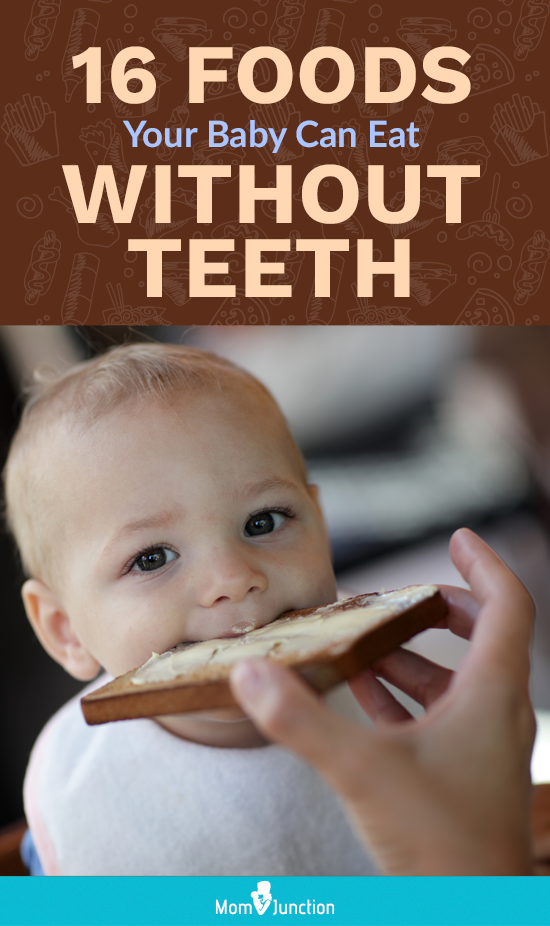 Avoid any colorful, sugary cereals.
Avoid any colorful, sugary cereals. - Sit baby in their high-chair for feeding time. If they eat finger foods while crawling around, they are more likely to choke.
- You’re not done with breast feeding or bottle feeding. Your baby is starting the transition, but breast milk and formula are still key.
- Pureeing or mashing vegetables may make them easier for your baby to eat when they are first transitioning from a liquid diet to solids.
Finger food - Encyclopedia Baby food
Viktoria Levchuk©
Finger food is baby food prepared in the form of pieces of boiled soft food so that the child can independently take it and transfer it to the mouth, chew it or swallow it without anyone help and any problems.
Finger food is a fun way to encourage the development of motor coordination and skills for biting, chewing and self-feeding. Food in pieces should be easy to grasp by children's fingers and long-term storage, and should not contain bones or seeds.
As soon as the child begins to take food with his fingers and put it into his mouth with reasonable hand-eye coordination, then the fun begins! Let your child experiment with soft snacks such as a banana or peach that can be “hand-mashed” to the right consistency. The more a child experiments with finger food, the faster he will masterfully feed himself.
Finger food helps keep a child's food interest. As soon as he begins to feed himself on his own, then new taste horizons open up for him. What child refuses to try to bring the product to his mouth on his own, even if he didn’t really like it before.
Contents:
Very often mothers think at what age should they give finger food to their baby.
Honestly, even for me it's a difficult question. It's just that sometime between eight and nine months, the baby began to eat small pieces of food. The change in the consistency of food by age is very well described in the WHO recommendation, so it should be guided by.
Food consistency up to a year. Click on me!!!
However, you should not do it blindly and try to feed the baby in pieces at a certain age, perhaps he will not be ready yet. Children are all different, some want food in pieces, almost from the beginning of complementary foods, others are not ready for lumpy food for up to a year or more. Therefore, any decision on finger food is made based on the child and his readiness. An excellent preparation for finger food is a nibbler, which will prepare the child for lumpy food.
The child has no teeth
Click on me!!! A child's gums are incredibly strong, as is the tongue, so the number of teeth is not an indicator of whether to give finger food or not. If the decision has been made to start complementary foods and the baby is doing well with mashed foods, then you can safely start giving small pieces of soft food when the baby is ready for it. At this stage, it is important to let the child try to eat food of a different consistency, more complex, in order to train the maxillofacial apparatus. Thus, the child gradually prepares for the full chewing of food with the help of the entire jaw, teeth and tongue.
Thus, the child gradually prepares for the full chewing of food with the help of the entire jaw, teeth and tongue.
Knowing if finger food is safe for a child
A good rule of thumb to help prevent choking is to avoid anything hard (e.g. raw carrots), round (e.g. whole grapes), sticky (e.g. , spoon of nut butter) or too much gummies (such as gummies). At first, the child is given pieces of food in the form of sticks, which can be easily clamped in the child's chick, later, when the child begins to control the finger grip better, you can move on to cubes. At first, finger food should be soft, boiled and melt in your mouth. As a child learns to manage with such products, it is possible to complicate the task and switch to fresh soft foods, etc.
Foods that squeeze easily between fingers are good for older children and for younger children. Around 16-18 months, many babies are ready for more complex textures.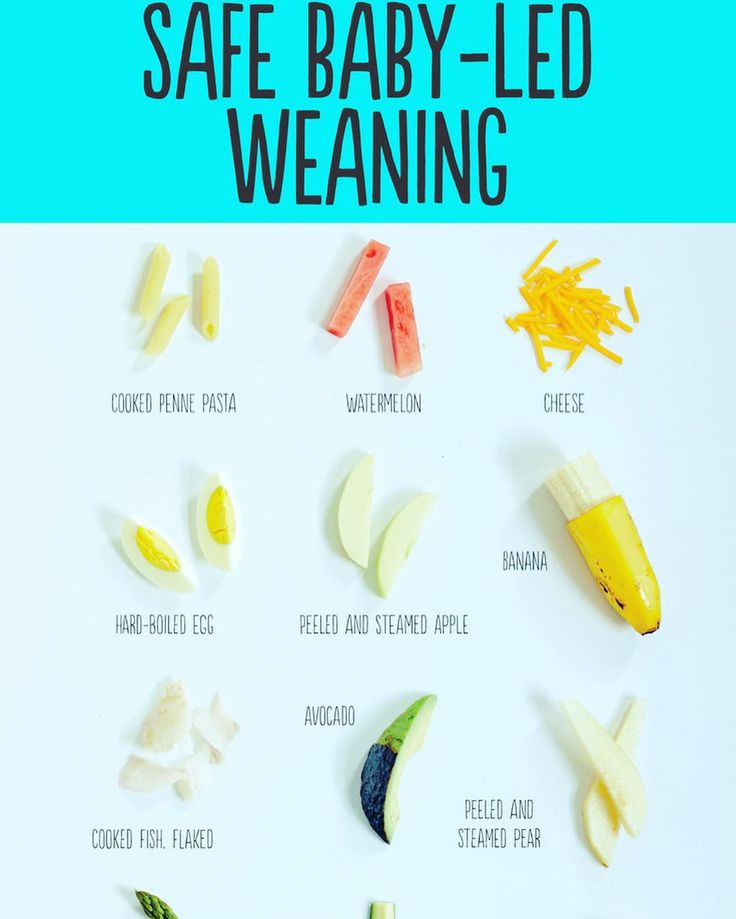 During this period, cutting food into pea-sized pieces is also a good idea - many babies tend to put large pieces of food in their mouths, so small cubes are used to avoid choking. We always adjust the sizes of products according to the age and eating experience of our own child.
During this period, cutting food into pea-sized pieces is also a good idea - many babies tend to put large pieces of food in their mouths, so small cubes are used to avoid choking. We always adjust the sizes of products according to the age and eating experience of our own child.
Usually the first finger food is biscuits or baby biscuits, which are very soft and dissolve easily in the mouth. The baby first sucks it, procrastinates, and learns to roll pieces of food in the mouth with the help of the tongue. A little later, when the teeth appear, you can give the product a little harder, for example, a soft apple, some parents play it safe and give a baked apple without a peel. Later, as new foods, vegetables and fruits are introduced into complementary foods, they are offered in the form of finger food, such as boiled broccoli or cauliflower. In general, the child can be offered almost all products in the form of finger food, which is introduced into baby food.
Should the product be peeled or not?
We give an apple to a child without a peel.
The first finger foods in the form of vegetables and fruits are given without skins. Yes, the skin of many fruits and vegetables contains valuable nutrients. It is often recommended to leave the skin on in order to take full advantage of the nutrients contained in the product. But removing the top layer from fruits and vegetables helps reduce the amount of pesticides that may be in the product. Peeling fruits and vegetables helps avoid choking hazards due to the rough texture of the skins. The peel also usually sticks to the palate in the child's mouth, thereby hindering him, and can be there for a long time, and when the child swallows, the probability of choking in the absence of an adult nearby is higher. Getting rid of the skin at the beginning of complementary foods also helps prevent disorders
Banana is convenient to eat with a small hand digestion. And we also take into account that there are some vegetables and fruits, such as pumpkin and avocado, which need to be peeled, because their peel is really inedible. It is not worth getting rid of the product from the peel for a long time, only at first. Usually the first couple of months of complementary foods and exposure to finger food. Then the product with the peel is given to the child in the presence of an adult, after which it is advisable to check the baby's mouth to see if he swallowed everything. Forcibly open your mouth should not be, play the game "Show your tongue or where are your teeth." By the age of 1.5, the child copes well with the peel of fruits and vegetables, if it is too rough, then it easily spits it out.
It is not worth getting rid of the product from the peel for a long time, only at first. Usually the first couple of months of complementary foods and exposure to finger food. Then the product with the peel is given to the child in the presence of an adult, after which it is advisable to check the baby's mouth to see if he swallowed everything. Forcibly open your mouth should not be, play the game "Show your tongue or where are your teeth." By the age of 1.5, the child copes well with the peel of fruits and vegetables, if it is too rough, then it easily spits it out.
Choking
The presence or absence of teeth does not mean that a child can chew. Sometimes children can bite off a piece of food, try to swallow it whole and choke, so never leave a child alone while eating. Some children can store food in their mouths like hamsters, so we always check to make sure the child has swallowed everything before leaving the kitchen. You can read the article on suffocation here.
Our finger foods
At first I gave biscuits to my first child, later I switched to a fresh apple, mostly fresh fruits, he sucked and procrastinated them more than he ate. Later, food appeared in the form of a toy, i.e. we crumbled it, crushed it, and sometimes something got into our mouths. However, since breast milk is always given at the end of complementary foods, I was not too worried about whether the baby was full or not.
Later, food appeared in the form of a toy, i.e. we crumbled it, crushed it, and sometimes something got into our mouths. However, since breast milk is always given at the end of complementary foods, I was not too worried about whether the baby was full or not.
With the second child, finger food was a gradual transition from the nibbler. We used it for about a month, then I ventured to give the first pieces of food. But to be honest, the child himself tried the first pieces of food, namely, he stole an apple and took a bite. The first experience of finger food is always scary, because at first the child often coughs and spits out food, he is learning, so it is important to be with the child, if something goes wrong, then the parent will be able to provide first aid. I remind you that the child is suffocating quietly, not a single sound. If he coughs, clears his throat, then everything is within the normal range, you need to help get rid of the food that interferes. Rules for helping with choking know before introducing finger food into complementary foods. It is imperative to look and study, and then give a new consistency of complementary foods.
It is imperative to look and study, and then give a new consistency of complementary foods.
Of course, at first, only one type of finger food is placed in front of the baby, later a plate is bought, divided into three to five sections, which is filled with finger food. The baby is already given a choice of what to eat, so you can easily determine the taste preferences in nutrition.
Finger food quick hacks
- The first finger food should be well kneaded between the gums.
- Food in pieces should be age appropriate - do not offer whole eggs to an 8 month old baby .
- If the child cannot raise his head and sit up without help, do not offer him finger food.
- The child should always sit in an upright position, not walk, especially at the first meeting, when he is offered baby food in the form of pieces, to avoid suffocation.
- NEVER leave your child unattended when serving finger food.

Examples of finger food
The first finger food is a biscuit or a baked apple. Those. food that does not need to be chewed, it melts easily in the mouth without additional help from the child. You can start with foods that have been well received by the child in a pureed form on a spoon, serving them in convenient cubes or pieces - the size of a pea for harder items, the size of a stick or wedge for softer foods.
Examples of finger food are:
Click me!!!- pieces of soft bread or crackers
- Soft cheese, Chedder or Mozarella
- Banana
- Ripe pear without peel
- Ripe soft green apple without a peel, the first time you can give boiled
- Boiled cabbage
- . carrots
- Boiled potatoes
- Boiled green peas
- Boiled pumpkin
- Boiled fish
- Boiled meat in the form of meatballs
- Pasta
- Quail eggs, etc.
*All products must be familiar to the child or introduced into complementary foods.
Finger Foods to Avoid
When it comes to feeding your baby with morsels, the biggest problem is preventing choking. So we do not allow him to eat anything without the presence of parents or any adult nearby. And we exclude any food that can get stuck in the child's airways:
Click me!!!- Popcorn,
- Nuts, peanuts,
- raisins and other dried fruits,
- raw vegetables (e.g. carrots),
- grapes,
- Cherries without bones, hard fruit and vegetables with a peel of
- Zhivalino Confinctions
- popcorn, pretzels, corn chips and other snack foods
- marshmallows, etc.
Most doctors do not recommend these foods until the child can eat them safely - around 4 years (although it depends on the child, closer to 3 or 5 years).
When should children be introduced to complementary foods? How to create a food interest?
Breastfeeding is a topic shrouded in numerous myths. What we have heard on this topic in our lives. What kind of advice you received from grandmothers, girlfriends, mothers from the playground and from social networks. How can parents not get confused in this flow of information and correctly, easily and without fear, set foot on the path of shaping their child's food interest?
What we have heard on this topic in our lives. What kind of advice you received from grandmothers, girlfriends, mothers from the playground and from social networks. How can parents not get confused in this flow of information and correctly, easily and without fear, set foot on the path of shaping their child's food interest?
The introduction of complementary foods is a delicate moment in which future food preferences are formed and at the same time the high nutritional needs of the baby are met. If you know the main principle of the division of responsibility in nutrition, then feeding will be successful. Parents are responsible for where, what and when their child should eat. Toddlers are responsible for how much to eat at a time and whether to eat at all [3]. If each party fulfills its responsibilities, then problems in nutrition can not be expected. But as soon as the parents try to take responsibility for the child (for example, they insist on their own amount of food), mutual understanding is broken and claims arise from both sides. This is the most important step in laying the foundation for a child's relationship with food. Take this seriously when introducing your baby's first solid foods.
This is the most important step in laying the foundation for a child's relationship with food. Take this seriously when introducing your baby's first solid foods.
What is complementary food? Why shouldn't babies be given water?
Complementary foods - all foods, solid and liquid, except breast milk or adapted formulas (European Society for Pediatric Gastroenterology, Hepatology and Nutrition - ESPGHAN).
In other words, if you supplement your child with water, then this will also be considered complementary foods. The child should not be supplemented with water when breastfeeding or formula feeding. Breast milk is 88% water, and formulas are diluted with water according to the instructions, which must not be violated. Excess fluid intake can lead to intoxication (hyponatremia) in the baby. This is a rather dangerous condition in the first months of life.
Types of Complementary Foods
- Pediatric complementary foods are recommended by the National Nutrition Optimization Program for children under one year old in the Russian Federation, which suggests an approximate sequence of introduction of products at the first complementary foods.

- BLW (baby-led weaning) or self-feeding allows you to develop your baby's ability to feed independently. Requires certain motor skills in the child. The first piece is the length of mom's index finger, which can be kneaded in the hand, with the transition to small pieces when mastering the tweezer grip. The main thing here is the child, the mother offers, and the baby chooses.
- Pedagogical complementary food helps to introduce the baby to food from the common table, develop interest and teach the basic rules at the table, it is suggested to start with “microdoses” of non-puréed food.
When to introduce complementary foods?
The National Program for Optimizing the Nutrition of Children under One Year of Age of the Russian Federation, WHO, the American Academy of Pediatrics (AAP), ESPGHAN agree in their recommendations that the start of complementary feeding of a child should be no later than 6 months, but not earlier than 4 months. life.
life.
Why not hurry?
Studies show that if complementary foods are introduced to a baby before 3-4 months, then the risk of obesity, diabetes, aspiration, pneumonia, otitis media, and gastrointestinal diseases increases. In the future, neophobia, selectivity in food is noted. Introducing complementary foods to a breastfed baby too early can crowd out breastfeeding, which means the baby is more likely to lose valuable nutrients and calories.
Consequences of late introduction of complementary foods
If you are late with complementary foods, then this can cause a loss of food interest, a lack of nutrients and micronutrients, the extinction of chewing skills, and a violation of eating behavior in the future.
In children, sensitive and critical periods are distinguished. During the sensitive period, the baby is ready to perceive a wide range of tastes and is able to more easily learn new skills. And during the critical period, it is already difficult for a child to learn something new, the brain does not want to work in a new way, and some neural connections may even turn off as unnecessary. Based on this, complementary foods should be introduced no earlier than 4 months and no later than 6 months.
Based on this, complementary foods should be introduced no earlier than 4 months and no later than 6 months.
What skills should a child have?
It is worth introducing complementary foods to a child when he has formed certain skills:
- The child can sit with support or independently. Feeding a bedridden baby is dangerous, as it increases the risk of aspiration (food entering the respiratory tract). You can not use a deck chair and a car seat for feeding, because the baby in it is in a reclining position, and not sitting.
- The child can keep his head upright and stable while sitting while eating.
- Shows food interest:
- opens his mouth when a spoonful of food is brought and becomes upset if the spoon is not in his mouth;
- pulls pens for food;
- is trying to snatch food from mom's hands.
What foods to start complementary foods with?
Nowadays complementary foods can be started traditionally by offering puréed food and gradually moving to soft pieces. Or you can go the more fashionable route and start solid foods straight away. I will dispel another myth that you can only start with certain products. There are no studies that would confirm the advantage of introducing certain products in a certain sequence. In complementary foods, it is permissible to use any products in a form suitable for the baby.
Or you can go the more fashionable route and start solid foods straight away. I will dispel another myth that you can only start with certain products. There are no studies that would confirm the advantage of introducing certain products in a certain sequence. In complementary foods, it is permissible to use any products in a form suitable for the baby.
Before making the first complementary foods for an infant, it is advisable to visit a pediatrician to clarify whether the baby is ready for the introduction of new foods. The doctor will advise with which product to start complementary foods. For example, with loose stools, it is recommended to start with rice porridge, with constipation - with vegetables or fruits. Each child, in any case, needs an individual approach, everyone is completely different.
At first, breast milk can be added to cereals and mixtures.
Gradually introduce more and more diverse in taste, texture, aroma, appearance products. In parallel, continue breastfeeding in the same mode. No need to try to quickly replace breastfeeding or artificial feeding with a new food. Moreover, breast milk contains enzymes that will help in the digestion of new products. The main task is to introduce the child to a diverse gastronomic world, to form a steady interest in food and proper eating behavior.
In parallel, continue breastfeeding in the same mode. No need to try to quickly replace breastfeeding or artificial feeding with a new food. Moreover, breast milk contains enzymes that will help in the digestion of new products. The main task is to introduce the child to a diverse gastronomic world, to form a steady interest in food and proper eating behavior.
Use foods that are specific to your family diet. For example, if the family does not eat broccoli, then the baby should not offer it.
First complementary foods:
- Iron-fortified dairy-free cereals + butter
- Puree or minced red or white meat, including fish
- Boiled, steamed or oven baked mono-ingredient vegetables + vegetable oil. Strive to have them in your daily diet, all colors of the rainbow
- Green legumes (green peas, green beans)
- Fruit, baked or pureed
- Boiled egg or scrambled eggs
- Dairy products - e.g. cottage cheese, yoghurt, fermented baked milk
- Whole grain bread, cereals and pasta
- Water optional.

Complementary feeding schedule
Provoke food interest before introducing complementary foods. Eat with pleasure a varied and bright food with a child. Let your child keep you company at dinner.
It is permissible to start complementary foods with 1 teaspoon of multi-component, non-liquid, mashed or mashed food with a fork in the morning and gradually increase its amount.
Complementary foods can be offered to a breastfed baby after being attached to the breast or vice versa.
We introduce a new product in 3-4 days, while observing the reaction of the child's body (allergy, constipation, vomiting, blood in the stool, diarrhea, rash).
Save up to 9-10 months of breastfeeding or artificial feeding in those feedings when we give complementary foods.
At the age of 8 months, the child should already be eating in pieces, even if teeth have not erupted. The pieces should be soft and easy to crush with your fingers.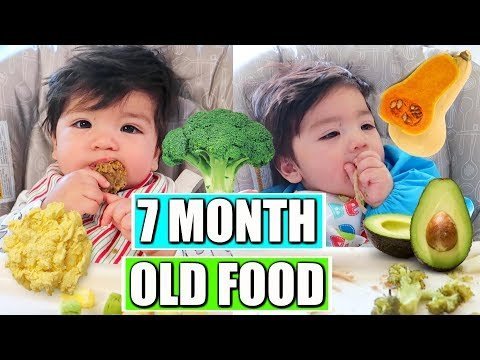 The diameter of the piece should not be more than 7-9 mm. The time of “finger food”, dirty walls and floors begins. Do not be nervous and continue to calmly train the tweezer grip. “Piece” food develops fine motor skills and hand coordination.
The diameter of the piece should not be more than 7-9 mm. The time of “finger food”, dirty walls and floors begins. Do not be nervous and continue to calmly train the tweezer grip. “Piece” food develops fine motor skills and hand coordination.
Pediatricians in developed countries recommend avoiding hard, slippery and smooth pieces: apples, pears, carrots, crackers, corn kernels, popcorn, whole grapes, nuts, whole beans, seeds.
For most parents, the introduction of pieces into complementary foods causes anxiety and worries. How can you reduce the level of anxiety that, by the way, kids feel? You can attend first aid courses or learn on your own the techniques that are used in babies in the first years of life. This knowledge will reduce anxiety by an order of magnitude. Remember that the diameter of the esophagus in a child up to a year is up to 0.8 cm. Therefore, the pieces should be slightly smaller. The baby may choke when introducing complementary foods, be prepared for this.
When to introduce allergenic foods?
Don't put off introducing "allergenic" foods into complementary foods. The later they are introduced, the greater the risk of developing allergies. The American Association of Pediatricians (AAP) based on research recommends the introduction of allergenic foods at 4-6 months.
Allergenic foods should be introduced carefully. Let lick, smell, and then try to eat. If the allergic reaction is confirmed in the baby, then do not rush to remove all foods from the diet and do not be afraid to introduce new ones. Avoid this product for the time being. Start keeping a food diary. Don't introduce multiple new foods on the same day.
Remember about histamine liberators or pseudo-allergens (citrus fruits, strawberries, brightly colored berries and fruits, chocolate). They need to be entered little by little. The manifestation of symptoms on the skin directly depends on the amount of food eaten.
Relationship of nutritional interest with trace elements.

Talk to your pediatrician about recommendations for vitamin D and iron supplements during the first year of life. Most often, children in their first year of life who are breastfed have a higher risk of developing iron deficiency anemia.
According to clinical guidelines, full-term breastfed and bottle-fed babies, starting from 4 months of age and before the introduction of complementary foods, are recommended to take an additional iron preparation at the rate of 1 mg per kg per day. Premature rushes who are breastfed, starting from 1 month of life and before switching to artificial feeding with milk formulas enriched with iron, or before the introduction of the first complementary foods, 2 mg of iron preparations per day are recommended per 1 kg of body weight.
Sometimes parents are faced with the fact that the child refuses complementary foods. Moms turn on all the forces, songs, dances, but nothing helps. This situation can occur with iron deficiency. One of the markers of lack of interest in food is the lack of this trace element. If you are experiencing this issue, please discuss this with your doctor. The doctor will assess the level of hemoglobin and erythrocyte indices, the level of which differs in different age categories.
One of the markers of lack of interest in food is the lack of this trace element. If you are experiencing this issue, please discuss this with your doctor. The doctor will assess the level of hemoglobin and erythrocyte indices, the level of which differs in different age categories.
How not to suppress food interest?
Avoid provoking factors for reducing food interest:
- fast food in large portions
- food abuse (force-feeding, under cartoons, through crying and screaming, prolonged holding at the table)
- very long lead time for 1 product (7-10 days)
Foods that should not be given as complementary foods?
- Whole milk up to 12 months (interferes with the absorption of iron, as a result of which the child may develop iron deficiency anemia)
- Honey (may contain botulism spores)
- Sugar, salt (if you add salt to the first complementary foods, then the craving for salt will remain in the future, which is an unhealthy habit)
- Whole nuts (risk of choking)
- Rice drinks (due to high levels of arsenic)
- Forest mushrooms
- Raw eggs, raw meat
- Red caviar
- Shark, tuna, marlin (high mercury content)
- Tea, coffee, energy drinks
- It is undesirable to introduce juice into the diet of a child under 1 year old, since it is not suitable for baby food, because it often causes diarrhea and caries in babies.

How to continue introducing complementary foods?
By about 12-15 months, babies can eat from a common table. A baby over a year old should get most of their energy and nutrients from prepared foods, and continued breastfeeding will be an added bonus. By this time, the baby has about 40 products in the diet. It is worth noting that the American Association of Pediatricians (AAP) recommends that you continue breastfeeding after the introduction of complementary foods for as long as you and your baby wish.
Conclusions
- Feed in a high chair, be sure to fasten the child (you can put it on your lap).
- Eat with your baby at the same table.
- Give your child colorful foods so they don't get too picky later on.
- After the introduction of monocomponent products, move on to more complex dishes.
- Do not delay the transition from a liquid food to a piece of food.
- Try to spoon feed or offer bites.

- Feed the baby slowly, wait until he shows that he is ready.
- Offer water from a cup.
- Offer food (even food that the child has previously refused), but do not insist.
- The volume of complementary foods eaten is controlled by the child himself, and not by the mother, grandmother or pediatrician.
- Learn to respond to signals of hunger (sucking, crying, irritability, excitatory limb movements) and satiety (turns head away from food, pushes away dishes, does not open mouth, shakes head, cries, vomits)
- Do not feed your child under cartoons and tablets.
The development of healthy eating behavior depends on healthy food and empathetic parental behavior.
Sources:
-
The program for optimizing the feeding of children in the first year of life in the Russian P78 Federation: guidelines / FGAU "NMIC of Children's Health" of the Ministry of Health of Russia.
 — M.: b. i., 2019. From 31-34.
— M.: b. i., 2019. From 31-34. -
Feeding and nutrition of infants and young children. Guidelines for the WHO European Region with a special focus on the republics of the former Soviet Union. WHO, 2003.
-
Ellyn Satter "Feeding and feeding a child from 0 to 5 years with love and common sense" Handbook for parents Translated from English. - M.: Martin, 2012. 384p.
-
Maria Kardakova "First the soup, then the dessert" LLC "Mann, Ivanov and Ferber", 2020. 191s.
-
A.V. Sitnova "Pro Nutrition for children without tears and persuasion" - Moscow: AST Publishing House, 2020. 240 pp., P 53-145.
-
Clinical guidelines "Iron deficiency anemia". (09.09.2021) - Approved by the Ministry of Health of the Russian Federation.
-
Fewtrell, Mary; Bronsky, Jiri; Campoy, Cristina; Complementary Feeding: A Position Paper by the European Society for Pediatric Gastroenterology, Hepatology, and Nutrition (ESPGHAN) Committee on Nutrition.
 Journal of Pediatrics Gastroenterology and Nutrition. January 2017.
Journal of Pediatrics Gastroenterology and Nutrition. January 2017. -
When, What, and How to Introduce Solid Foods.
-
Nutrition for infants and young children. / World Health Organization. 2018.
-
Prevention of Food Allergy: The Significance of Early Introduction. Pasquale Comberiati et al. Medicine (Kaunas). 2019.
-
Joan Younger Meek, Policy Statement: Breastfeeding and the Use of Human Milk Pediatrics. 2022.
-
Health of babies and children. / www.mayoclinic.org/healthy-lifestyle/infant-and-toddler-health/in-depth/healthy-baby/art-20046200
-
American Academy of Pediatrics.
-
Jessica M White, France Begin, Richard Kumapley, Colleen Murray, Julia Krasevec. Complementary feeding practices: Current global and regional estimates - Matern Child Nutr., 2017.
-
Fangupo, L. J., Heath, A. L. M.




